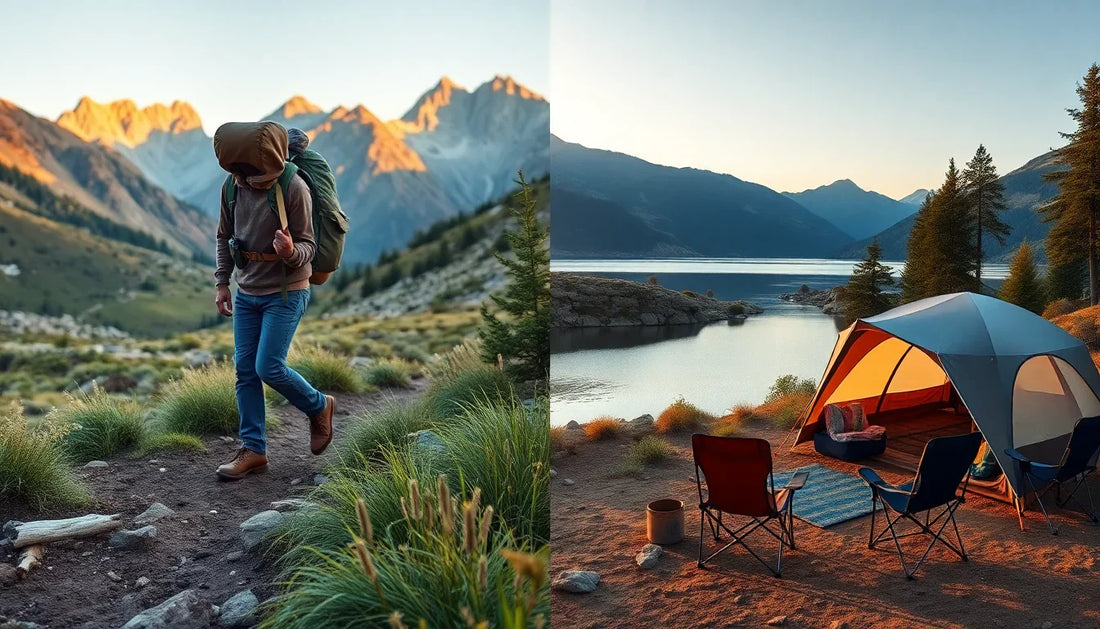
Backpacking vs. Car Camping: Which is Right for You?
Share
Camping is a beloved outdoor activity that offers a chance to connect with nature, unwind, and create unforgettable memories. However, when it comes to planning your camping adventure, you'll need to decide between two distinct styles: backpacking and car camping. Each approach has its own unique set of advantages and challenges, and the choice ultimately depends on your personal preferences, fitness level, and the type of experience you're seeking.
Backpacking: Pros and Cons
Backpacking is the ultimate adventure for the outdoor enthusiast. It involves carrying all your essential gear on your back and hiking to your campsite, often in remote or rugged locations. The primary advantage of backpacking is the sense of freedom and immersion in nature it provides. You'll be able to access more secluded and untouched areas, away from the crowds. Additionally, backpacking encourages a minimalist approach, forcing you to pack only the essentials and reducing the overall weight you'll need to carry. However, backpacking also comes with its challenges. It requires a higher level of physical fitness and endurance, as you'll be responsible for carrying all your gear over potentially long distances and uneven terrain. The gear you'll need for backpacking is also typically more specialized and expensive, from lightweight tents and sleeping bags to compact cooking equipment.
Car Camping: Pros and Cons
In contrast, car camping offers a more comfortable and accessible approach to outdoor adventures. With car camping, you can drive your vehicle directly to the campsite, allowing you to bring more gear and amenities. This makes it a more appealing option for families, groups, or those who prefer a more relaxed camping experience. The convenience of car camping allows you to bring larger, heavier, and more luxurious items, such as coolers, camp chairs, and even small tables. Additionally, car camping is generally more beginner-friendly, as it doesn't require the same level of physical fitness or specialized gear. However, the trade-off is that you'll be limited to campsites that are accessible by vehicle, potentially missing out on more remote and untouched locations.
Comparison Factors
When deciding between backpacking and car camping, there are several key factors to consider:
Cost
Backpacking typically requires a larger initial investment in specialized, high-quality gear, while car camping can be more budget-friendly, as you can often use more affordable and versatile equipment.
Physical Fitness
Backpacking demands a higher level of physical fitness and endurance, as you'll be carrying all your gear on your back. Car camping is generally more accessible for those with varying fitness levels.
Gear and Equipment
Backpacking gear is designed to be lightweight and compact, while car camping gear can be larger, heavier, and more comfortable.
Flexibility and Accessibility
Backpacking offers more flexibility in terms of campsite selection, but car camping provides easier access to campsites and the ability to bring more amenities.
Comfort Level
Car camping generally offers a more comfortable experience, with the ability to bring larger and more luxurious items, while backpacking requires a more minimalist approach.
Which Style is Right for You?
Ultimately, the choice between backpacking and car camping depends on your personal preferences, fitness level, and the type of camping experience you're seeking. If you're a beginner or prefer a more relaxed camping trip, car camping may be the better option. However, if you're an experienced outdoor enthusiast seeking a more adventurous and immersive experience, backpacking could be the perfect fit.
Regardless of your choice, both backpacking and car camping offer unique opportunities to connect with nature, challenge yourself, and create lasting memories. The key is to explore both styles and find the one that best aligns with your camping aspirations.
